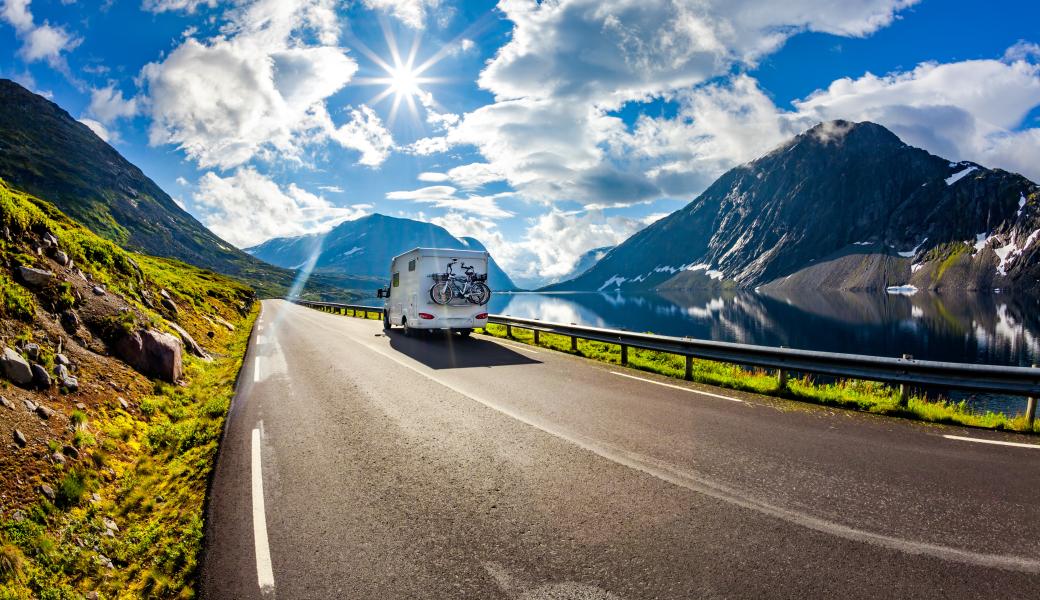Good Housekeeping: Connected Camping– The Travel Trend Bringing Work To The Great Outdoors

It’s Monday, and it’s unseasonably warm for early June in Bar Harbor, Maine, making it the perfect day to take in the local sights before tourist season really picks up. But even though Mt. Desert Narrows Camping Resort is a vacationer’s paradise — sitting on a rocky coastline a few miles from Acadia National Park — for many visitors at the campground today, there’s still a 9-to-5 grind to be had. People are clacking away at laptops from picnic tables, others slowly crunching up and down dirt paths on conference calls, and almost definitely, there are more tucked out of sight behind tent flaps and RV doors doing the same.
"We’ve really seen this more and more in the last couple years, [especially] with the pandemic," says Julia Guest, office lead at Mt. Desert Narrows. "Lots of people working from their sites and by the main building, and kids doing homeschooling.” While we chat in the midmorning heat, another camper pops into the office to inquire about the Wi-Fi strength. “We have a guy from Spectrum on the way," she answers without missing a beat. This, evidently, is a question she gets a lot.
It makes sense. More than 50% of campers said access to cell or Wi-Fi service has “a great deal of impact” on the length of their trips, according to the Kampground of America’s (KOA) 2021 North American Camping Report, which annually surveys thousands of households in U.S. and Canadian camping markets. That's up 1,500% from 2019, when only 3% indicated Wi-Fi as a top factor when selecting a campground. The 2021 report also found that more than 80% of campers changed their camping habits in 2020 to include working and schooling, and a whopping 41% percent of all campers (and 51% of new campers) now say they “sometimes or always” work while camping.
What was once an oxymoron is now the increasing norm: Camping is very much on the grid. In fact, in a recent Good Housekeeping survey, only 6% of respondents said that limited access to technology was the biggest appeal for camping or RVing — a far cry from what once was. "The ethos of [camping and] RV travel has moved quickly from, 'I want to get off the grid and not be able to access the internet,' to, 'I want this RV to be an extension of my office, my classroom, my life,'" says Jon Gray, CEO of peer-to-peer RV rental marketplace RVshare. Jen Young, co-founder and CMO of Outdoorsy, a global peer-to-peer RV sharing company, agrees, saying that in the past, camping "was all about, 'Oh sorry, I can’t get cell service out here, I’m gonna be offline.'" But now, she says the script has flipped to, "'Hey, I can get cell service wherever I am. Let me work with my family in Yosemite for the week.'" And that’s exactly what Americans are doing in 2021.
In the past year, according to the 2021 Airbnb Report on Travel & Living, people have been fleeing cities and flocking to remote destinations; in fact, the lodging company notes rural travel has doubled since 2015. Similarly, the 2021 VRBO Trend Report found that 61% of families are now more likely to visit an outdoorsy destination than an urban one. That's likely because, with long-haul air travel largely on hold, Americans have been taking longer domestic trips and working from their destinations, a silver lining to the stay-at-home orders that pushed many people's routines remote. For those privileged enough to work in a field that affords the luxury of a work-from-home model, a regimented five-day work and school week is no longer tethering them to their hometowns, leading to rise in what vacation rental marketplace VRBO has dubbed the "flexcation," a longer vacation that mixes work with leisure and often takes place during less-pricey shoulder seasons. In fact, Airbnb reviewers who mentioned "remote work" jumped by 520%, year over year.
"The rules around how people work and live have changed forever," says Young. "People have proven, in most jobs and businesses, that they can work wherever they have connectivity." And with the Outdoor Industry Association reporting 28% growth in camping and Airbnb noting a spike in stays near national parks this year, there's no denying that people have been heading to the great outdoors for longer stretches, and working all the while — even if that requires rigging their tents into a hotspot.
To be clear, this growing interest in camping and RVing is not entirely pandemic-related. “We have seen year over year increases in camping ... since coming out of the recession,” says Toby O’Rourke, president and CEO of KOA. But the COVID-19 outbreak sent numbers skyrocketing. After all, camping is self-contained, outdoors and socially distant by nature, a winning trifecta for pandemic travel.
In fact, it's exactly what spurred me — and millions of others — to try out an RV for the first time this summer. I’m essentially the poster child for pandemic camping travel: The sleek 2021 Airstream I’m renting from Air Maine Adventures courtesy of Outdoorsy is a Class B campervan, which according to Outdoorsy data, is among the most popular type of rental this year. Class Bs are built on van chassis, so they tend to have the nimble maneuverability of a van while still offering all the cozy amenities of a motorhome. That's likely why they're seeing the highest year over year growth at 152%, per the RV Industry Association’s May 2021 Shipment Report, which is 64% higher than any other category of motorhome or towable.
Check out the full article from Good Housekeeping here.
Please Sign in to View
Log in to view member-only content.
If you believe you are receiving this message in error contact us at memberservices@rvia.org.
